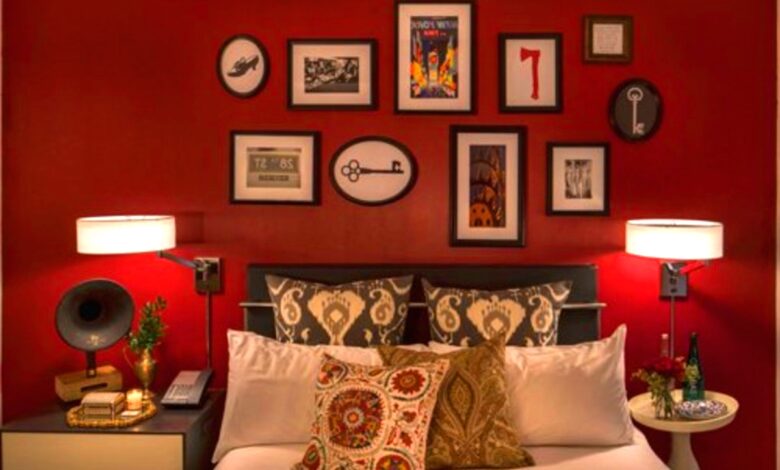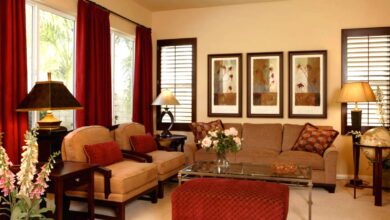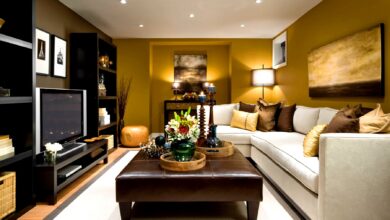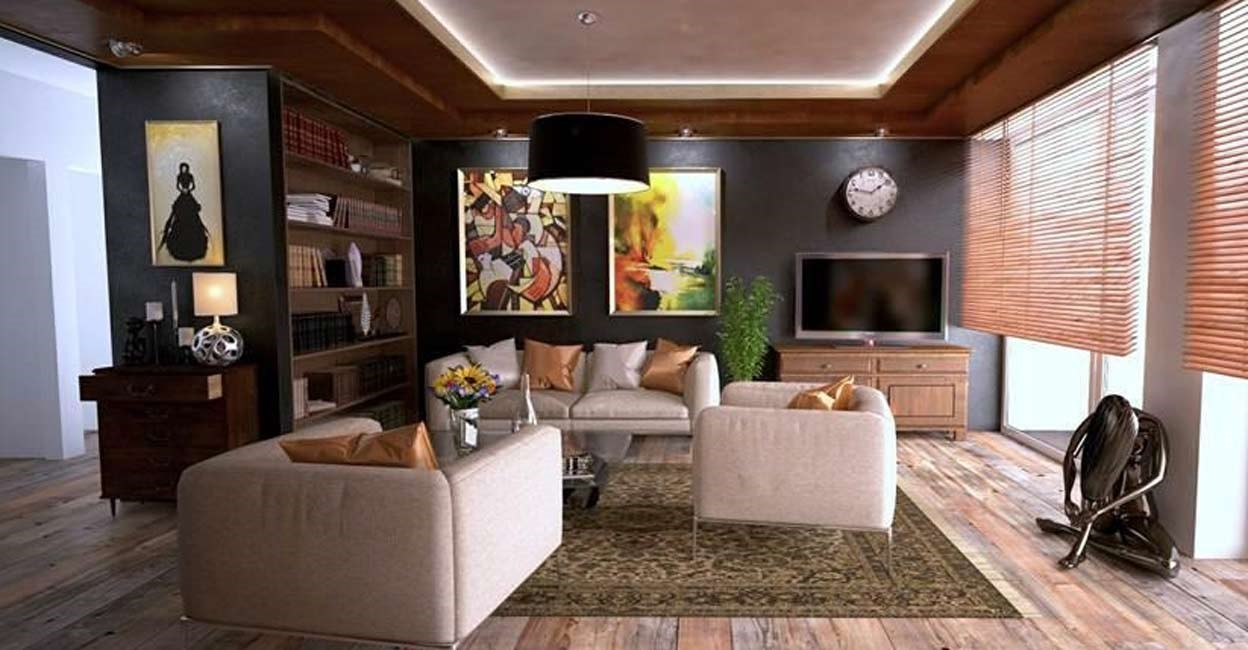How Your Home Design Affects Your Mood
In this comprehensive guide, we'll explore how your home design affects your mood and delve into design elements such as color schemes and natural elements.

In our fast-paced, modern world, home has become more than just a place to sleep and eat. It is a sanctuary, a reflection of personality, and an emotional anchor. Whether you realize it or not, your home environment has a profound impact on your mental well-being. The way your home is structured, decorated, and maintained can significantly affect your emotions, energy levels, and overall mental health. Understanding how home design affects your mood is crucial for creating a space that nurtures your psychological well-being.
In this comprehensive guide, we’ll explore how your home design affects your mood and delve into design elements such as color schemes, lighting, layout, natural elements, and personalization. By the end of this article, you’ll have actionable tips to transform your home into a mood-boosting haven.
1. The Psychology Behind Home Design
The field of environmental psychology studies how the built environment influences human behavior and emotions. One of the key takeaways from this discipline is that the design of your home is not just about aesthetics; it’s intrinsically linked to your psychological state. Understanding how home design affects your mood involves examining various sensory and spatial factors.
2. Color Psychology: The Power of Hues
Color plays a pivotal role in how home design affects your mood. Different colors evoke different emotional responses:
- Blue: Calming and serene; ideal for bedrooms and bathrooms.
- Yellow: Energizing and uplifting; great for kitchens and dining areas.
- Green: Balancing and refreshing; suitable for living rooms and offices.
- Red: Stimulating and intense; best used as an accent color.
- Neutral tones: Promote relaxation and can serve as a versatile background.
Choosing the right color palette is foundational in designing a mood-enhancing home. Make conscious choices based on the function of each room.
3. Natural Light and Artificial Lighting
Lighting is one of the most influential factors in home design. Natural light boosts vitamin D levels, improves sleep, and enhances mood. Large windows, skylights, and strategically placed mirrors can help amplify natural light in your home.
Artificial lighting also plays a crucial role. Use layered lighting (ambient, task, and accent) to create a dynamic and adaptable environment. Avoid overly harsh lights; instead, opt for dimmable fixtures and warm-toned bulbs to promote comfort and relaxation.
4. Layout and Spatial Arrangement
How home design affects your mood also depends on the layout and spatial flow of your rooms. A cluttered or cramped space can cause stress and anxiety. In contrast, open layouts and clearly defined zones contribute to a sense of order and tranquility.
Here are some layout tips to enhance mood:
- Maintain clear pathways and avoid furniture congestion.
- Use rugs, lighting, and furniture placement to define zones in open-plan areas.
- Incorporate multipurpose furniture to maximize utility in small spaces.
5. Incorporating Nature: Biophilic Design
Biophilic design is a concept that integrates natural elements into indoor environments. Studies show that incorporating nature into home design reduces stress, enhances cognitive function, and boosts overall well-being.
Examples include:
- Indoor plants and vertical gardens
- Natural materials like wood, stone, and bamboo
- Water features such as fountains or aquariums
- Nature-inspired art and decor
Understanding how home design affects your mood through nature can guide you in selecting elements that foster peace and harmony.
6. Decluttering and Organization
Clutter has a direct correlation with elevated cortisol levels, the stress hormone. A tidy, well-organized space not only looks better but also feels better.
Tips for decluttering:
- Use storage solutions like baskets, bins, and built-ins
- Implement the “one in, one out” rule
- Schedule regular decluttering sessions
The minimalist approach isn’t about deprivation but about making space for what truly matters. An organized home supports mental clarity and emotional well-being.
7. Personalization and Sentimental Value
Your home should tell your story. Personalized spaces foster a sense of belonging and emotional security. Incorporating items with sentimental value—family photos, travel souvenirs, handmade crafts—can evoke positive emotions.
However, balance is key. Overcrowding a space with personal items can lead to visual clutter. Use gallery walls, curated displays, and thematic arrangements to create meaningful yet orderly expressions of your identity.
8. Texture and Material Choice
Texture affects how we perceive and feel in a space. Soft textures like velvet and plush rugs create a cozy, comforting ambiance. Hard materials like metal and glass lend a modern, clean feel but can also seem cold if overused.
Mix and match textures for depth and interest. Layering materials adds sensory richness, which in turn enhances emotional engagement with your environment.
9. Soundscaping Your Home
Sound is an often-overlooked aspect of how home design affects your mood. Acoustic design can create a peaceful or energizing atmosphere depending on your needs.
Consider these sound-enhancing tips:
- Add soft furnishings to absorb sound and reduce echo
- Use white noise machines or ambient sound systems
- Install double-glazed windows to block external noise
Curating the auditory environment of your home contributes significantly to stress reduction and emotional well-being.
10. Scent and Mood
The olfactory sense is directly linked to the brain’s limbic system, which controls emotions and memories. Scents can evoke strong emotional responses and contribute to a mood-enhancing environment.
Use scented candles, essential oil diffusers, or fresh flowers to introduce calming or invigorating scents. Lavender, eucalyptus, citrus, and sandalwood are popular mood-boosting options.
11. Room-by-Room Guide to Mood-Enhancing Design
Living Room:
- Use warm, inviting colors
- Incorporate natural elements
- Provide ample seating for social interaction
Bedroom:
- Focus on calming colors like blue or lavender
- Invest in quality bedding
- Keep the layout simple and uncluttered
Kitchen:
- Utilize bright, energizing colors like yellow
- Ensure good task lighting
- Keep countertops clean and organized
Bathroom:
- Use spa-like elements: soft towels, candles, plants
- Choose soothing colors
- Incorporate natural light if possible
Home Office:
- Opt for neutral and green tones for focus
- Organize with functional storage
- Position desk near a window for natural light
12. The Role of Smart Home Technology
Smart home devices can enhance how home design affects your mood by providing control and adaptability. For example:
- Smart lighting systems allow you to adjust brightness and color temperature
- Smart thermostats maintain a comfortable climate
- Voice-activated assistants can play music, control lighting, and provide calming sounds
Technology, when integrated thoughtfully, can elevate the emotional experience of your home.
Conclusion
Understanding how home design affects your mood empowers you to create a space that supports emotional and mental well-being. By thoughtfully considering elements like color, light, layout, nature, and personalization, you can transform your home into a sanctuary that not only looks beautiful but also feels uplifting.
Designing with intention doesn’t require a massive budget or professional expertise—just awareness and creativity. Whether you’re doing a full renovation or simply rearranging your furniture, every small change can make a big difference in how your home makes you feel.
So next time you step into your living space, take a moment to reflect: How does your home make you feel? And how can you tweak it to feel even better? After all, the way your home design affects your mood is not just a trend—it’s a lifestyle choice worth investing in.











